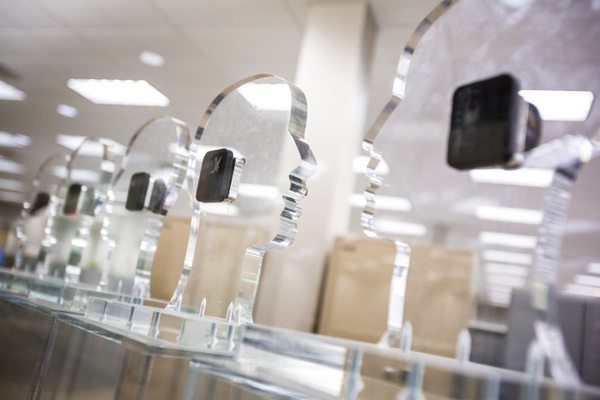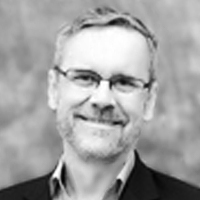Starkey Research Update: Interview with Simon Carlile, Senior Director of Research
AudiologyOnline: We're looking forward to Starkey's upcoming webinar series, Leading in Hearing Science, that will be kicking off with your presentation on August 16, entitled Listening Into the Future. What is your title at Starkey and when did you start?

Simon Carlile: I started at Starkey Hearing Technologies in July 2015 as Senior Director of Research.
AudiologyOnline: What is a typical workday like for you?
Simon: One of the great things about my job is that I haven’t had a “typical day” yet. The nature of research is that one’s life is constantly filled with new challenges and opportunities. There are between 35 to 40 scientists, engineers and audiologists in Starkey Research, depending on the number of visitors and interns. Our work covers a wide range of disciplines including hearing and cognitive neurosciences, signal processing and machine learning and audiological and clinical sciences. Every conversation, every problem, every opportunity is different. But the focus, the enthusiasm and the sheer brilliance of the people I am most fortunate to work with is a rock-solid constant in my day.
AudiologyOnline: What is your educational background?
Simon: My undergraduate degree and my Ph.D. are from the University of Sydney, Australia. I must admit however, I was more interested in my band and the myriad extracurricular activities. It was a project in my final undergraduate year, my honors year, that sealed my fate to be in research, hearing research in particular. This 10-month project was based in a neuroscience laboratory studying hearing. I discovered the excitement of formulating the question to nature (i.e. research) and the sense of awe and wonder when you see something in the lab that no other human being has ever seen before. I was absolutely and completely hooked!
My honors year research went on to be published in the Proceedings of the Royal Society – not a bad start to a scientific career. I went on to complete a Ph.D. in the same lab, and then off to Oxford where I became a lecturer in neuroscience at Pembroke College, and later a Junior Research Fellow at Green College, Oxford.
AudiologyOnline: Tell us about your professional experience before your position at Starkey.
Simon: After lecturing, I returned to the University of Sydney and set up the Auditory Neuroscience Laboratory in the Faculty of Medicine. Over the next few years, we built a highly interdisciplinary team made of the best and brightest faculty, postdoctoral researchers and graduate students. This provided an incredible foundation for what has become a very productive and innovative laboratory. We have published more than 120 peer reviewed articles in areas as diverse as bioacoustics, neurophysiology, neural and cognitive modelling, virtual reality, hearing impairment, auditory attention, the cocktail party problem, neural imaging, audio-visual integration, perceptual learning and auditory processing disorders.
From there, I got involved in the development of a groundbreaking new problem-based learning curriculum for teaching medicine. In the mid-1990s, I used the nascent world wide web (WWW) technologies to help develop and deliver the program over what is now known as an intranet (we called it Med Ed Net at the time). That led to six more years as Chief Information Office at the University. What excited me most about that role was ushering in and nurturing the profound educational changes that resulted from the new interactive and online technologies.
During all this I had also continued to leading my research team and ty that time, the lab had quite a number of patents and growing commercial opportunities. It was time for a new adventure so I stepped down from my role as CIO and got involved in the start-up world. My research had always had a serious translational focus and now was the time to see some of that realized in real solutions to real problems. I spun-off a number of different companies around different intellectual property and product ideas. One company was in the area of virtual reality for video games – I spoke many times at the huge Game Developers Conference at the Moscone Centre and spent time in San Francisco and Silicon Valley. One of my other companies, VAST Audio, started working with Starkey Hearing Technologies about five years ago, developing and implementing the Spatial Hearing Aid algorithms. That of course took me to Berkeley, California to the Starkey Hearing Research center where I am now based. I’m delighted to say that early work now forms an important part of Starkey’s Gen2 Feature set rolling out in upcoming product releases.
AudiologyOnline: What are you working on now?
Simon: We have been working to clarify our understanding of the future technologies that we will be able to leverage in delivering cutting edge hearing instruments in the coming years. This involves a wide and deep understanding of the current technology trends coupled with a principled understanding of the evolving needs of our customers and end users. It is an incredibly exciting time to be at the cutting edge as we get our mind’s wrapped around all the possibilities.

AudiologyOnline: Why did you decide to work for Starkey Hearing Technologies?
Simon: Much of my research has had a significant translational focus — having previously developed technology tools, clinical tools and technologies for consumer and specialist audio products —and Starkey provided the opportunity for this work to be even more impactful in addressing a significant and serious problem that has a calamitous effect on millions of people’s lives.
AudiologyOnline: What are some of the challenges you face in your job? How do you address them?
Simon: Research by its very nature requires an intense concentration, intellect and effort on a specific and well-defined problem. On a day-to-day basis, it is a very narrow exercise and, traditionally, we have organized our activities along disciplinary lines – in Starkey’s case we have departments of Hearing Science, Audiology and Signal Processing. The overall problems we are addressing, however, are multifaceted, complex and placed in a dynamic social context. The only way to effectively address such problems is to adopt an interdisciplinary approach. That is, reaching across disciplinary boundaries and sharing the different perspectives of the problem – this has the power to develop new approaches to old problems and uncover new ways of seeing the problem itself.
In Starkey Research, we have begun addressing this issue at every possible level: intellectually, structurally, culturally, in the ways we ideate, define and motivate projects, the way we prioritize and resource projects and the way we measure the successes along the way. Good research is not a short-term process and to commit to a particular path takes determination and fortitude. We are addressing these issues using the wisdom of those who are “in the trenches.” We have committed to emphasizing this critical interdisciplinary aspect going forward in our planning and processes.

AudiologyOnline: What does the future look like to you? Where do you see Starkey Hearing Technologies heading in the next 5-10 years in terms of technology and research?
Simon: Now that is the $10 million question! The scientific knowledge in the world doubles every nine years, and the reach and impact of disruptive technologies is becoming blindingly fast.
I believe there are two things that we must do: First, pick the trends and don’t worry about the details. Second, invent our slice of the future and do it before anyone else! The trends we can rely on are captured in the notion of the Internet of Things, including wearable technologies, virtually unlimited processing power (the Cloud) and the rapid advance in bio-sensory technology including ambulatory EEG and peripheral nervous system sensing. These are the wave of technology changes that we are now surfing down. In less time than we think, the Universal Hearable V1.0 will be in our ears and connecting us to each other, regardless of hearing status, in ways that we can only begin to imagine.
AudiologyOnline: Tell us a little bit about yourself - where you are from and what you like to do outside of work?
Simon: I was born in the East End of London and my parents emigrated to Australia when I was 7. So, even though I still travel on a EU passport, I am fundamentally and proudly Australian by upbringing and attitude. I have always enjoyed living in different places, and I am hugely excited about my newly adopted town (San Francisco) and living in the U.S. I have three wonderful sons and my wife, my raison detre and soul mate Debbie, whom I adore. I come from a musical family and, although I have very underdeveloped musical skills, I enjoy composition, arrangement and orchestration – there is a mathematical elegance that is deeply satisfying. I love to ski much too fast for my own health, and I am never happier than when at the tiller in a stiff breeze.
AudiologyOnline: Thanks for your time, Simon. We’re excited about the upcoming webinar series, Leading in Hearing Science, consisting of three, one-hour presentations:
- Listening Into the Future, presented by Simon Carlile on August 16
- Do Cognitive Assessments Belong in the Audiology Clinic?, presented by Jason Galster on September 13
- Mobile Apps and the Listening Experience, presented by Chris Howes on October 4
All live webinars will begin at 12pm Eastern, and are offered for one-hour of continuing education (0.1 CEU). The series will be recorded for on-demand viewing. Readers can click the links above for more information and to register.


